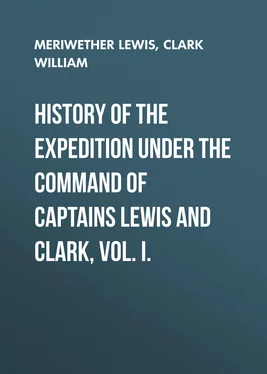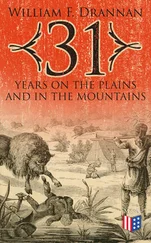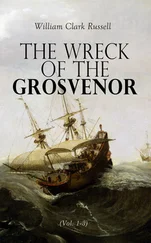William Clark - History of the Expedition under the Command of Captains Lewis and Clark, Vol. I.
Здесь есть возможность читать онлайн «William Clark - History of the Expedition under the Command of Captains Lewis and Clark, Vol. I.» — ознакомительный отрывок электронной книги совершенно бесплатно, а после прочтения отрывка купить полную версию. В некоторых случаях можно слушать аудио, скачать через торрент в формате fb2 и присутствует краткое содержание. Жанр: Путешествия и география, История, foreign_edu, foreign_antique, foreign_prose, на английском языке. Описание произведения, (предисловие) а так же отзывы посетителей доступны на портале библиотеки ЛибКат.
- Название:History of the Expedition under the Command of Captains Lewis and Clark, Vol. I.
- Автор:
- Жанр:
- Год:неизвестен
- ISBN:нет данных
- Рейтинг книги:5 / 5. Голосов: 1
-
Избранное:Добавить в избранное
- Отзывы:
-
Ваша оценка:
- 100
- 1
- 2
- 3
- 4
- 5
History of the Expedition under the Command of Captains Lewis and Clark, Vol. I.: краткое содержание, описание и аннотация
Предлагаем к чтению аннотацию, описание, краткое содержание или предисловие (зависит от того, что написал сам автор книги «History of the Expedition under the Command of Captains Lewis and Clark, Vol. I.»). Если вы не нашли необходимую информацию о книге — напишите в комментариях, мы постараемся отыскать её.
History of the Expedition under the Command of Captains Lewis and Clark, Vol. I. — читать онлайн ознакомительный отрывок
Ниже представлен текст книги, разбитый по страницам. Система сохранения места последней прочитанной страницы, позволяет с удобством читать онлайн бесплатно книгу «History of the Expedition under the Command of Captains Lewis and Clark, Vol. I.», без необходимости каждый раз заново искать на чём Вы остановились. Поставьте закладку, и сможете в любой момент перейти на страницу, на которой закончили чтение.
Интервал:
Закладка:
William Clark
History of the Expedition under the Command of Captains Lewis and Clark, Vol. I. / To the Sources of the Missouri, Thence Across the Rocky Mountains and Down the River Columbia to the Pacific Ocean. / Performed During the Years 1804-5-6
CHAP. I
The party set out on the expedition and pass Wood river—Description of the town of St. Charles—Osage Woman river—Gasconade and Osage Rivers described—Character of the Osage Indians—Curious traditionary account of their Origin—The party proceed and pass the Mine river—The two Charitons—The Kanzas, Nodawa, Newahaw, Neeshnabatona, Little Nemahar, each of which are particularly described—They encamp at the mouth of the river Platte—A particular description of the surrounding country—The various Creeks, Bays, Islands, Prairies, &c., given in the course of the route.
On the acquisition of Louisiana, in the year 1803, the attention of the government of the United States, was early directed towards exploring and improving the new territory. Accordingly in the summer of the same year, an expedition was planned by the president for the purpose of discovering the courses and sources of the Missouri, and the most convenient water communication thence to the Pacific ocean. His private secretary captain Meriwether Lewis, and captain William Clarke, both officers of the army of the United States, were associated in the command of this enterprize. After receiving the requisite instructions, captain Lewis left the seat of government, and being joined by captain Clarke at Louisville, in Kentucky, proceeded to St. Louis, where they arrived in the month of December. Their original intention was to pass the winter at La Charrette, the highest settlement on the Missouri. But the Spanish commandant of the province, not having received an official account of its transfer to the United States, was obliged by the general policy of his government, to prevent strangers from passing through the Spanish territory. They therefore encamped at the mouth of Wood river, on the eastern side of the Mississippi, out of his jurisdiction, where they passed the winter in disciplining the men, and making the necessary preparations for setting out early in the Spring, before which the cession was officially announced. The party consisted of nine young men from Kentucky, fourteen soldiers of the United States army who volunteered their services, two French watermen—an interpreter and hunter—and a black servant belonging to captain Clarke—All these, except the last, were enlisted to serve as privates during the expedition, and three sergeants appointed from amongst them by the captains. In addition to these were engaged a corporal and six soldiers, and nine watermen to accompany the expedition as far as the Mandan nation, in order to assist in carrying the stores, or repelling an attack which was most to be apprehended between Wood river and that tribe. The necessary stores were subdivided into seven bales, and one box, containing a small portion of each article in case of accident. They consisted of a great variety of clothing, working utensils, locks, flints, powder, ball, and articles of the greatest use. To these were added fourteen bales and one box of Indian presents, distributed in the same manner, and composed of richly laced coats and other articles of dress, medals, flags, knives, and tomahawks for the chiefs—ornaments of different kinds, particularly beads, lookingglasses, handkerchiefs, paints, and generally such articles as were deemed best calculated for the taste of the Indians. The party was to embark on board of three boats: the first was a keel boat fifty-five feet long, drawing three feet water, carrying one large squaresail and twenty-two oars, a deck of ten feet in the bow, and stern formed a forecastle and cabin, while the middle was covered by lockers, which might be raised so as to form a breast-work in case of attack. This was accompanied by two perioques or open boats, one of six and the other of seven oars. Two horses were at the same time to be led along the banks of the river for the purpose of bringing home game, or hunting in case of scarcity.
Of the proceedings of this expedition, the following is a succinct and circumstantial narrative.
All the preparations being completed, we left our encampment on Monday, May 14th, 1804. This spot is at the mouth of Wood river, a small stream which empties itself into the Mississippi, opposite to the entrance of the Missouri. It is situated in latitude 38° 55' 19-6/10" north, and longitude from Greenwich, 89° 57' 45". On both sides of the Mississippi the land for two or three miles is rich and level, but gradually swells into a high pleasant country, with less timber on the western than on the eastern side, but all susceptible of cultivation. The point which separates the two rivers on the north, extends for fifteen or twenty miles, the greater part of which is an open level plain, in which the people of the neighbourhood cultivate what little grain they raise. Not being able to set sail before four o'clock P.M., we did not make more than four miles, and encamped on the first island opposite a small creek called Cold Water.
May 15. The rain, which had continued yesterday and last night, ceased this morning. We then proceeded, and after passing two small islands about ten miles further, stopped for the night at Piper's landing, opposite another island. The water is here very rapid and the banks falling in. We found that our boat was too heavily laden in the stern, in consequence of which she ran on logs three times to-day. It became necessary to throw the greatest weight on the bow of the boat, a precaution very necessary in ascending both the Missouri and Mississippi rivers, in the beds of which, there lie great quantities of concealed timber.
The next morning we set sail at five o'clock. At the distance of a few miles, we passed a remarkable large coal hill on the north side, called by the French La Charbonniere, and arrived at the town of St. Charles. Here we remained a few days.
St. Charles is a small town on the north bank of the Missouri, about twenty-one miles from its confluence with the Mississippi. It is situated in a narrow plain, sufficiently high to protect it from the annual risings of the river in the month of June, and at the foot of a range of small hills, which have occasioned its being called Petite Cote, a name by which it is more known to the French than by that of St. Charles. One principal street, about a mile in length and running parallel with the river, divides the town, which is composed of nearly one hundred small wooden houses, besides a chapel. The inhabitants, about four hundred and fifty in number, are chiefly descendants from the French of Canada; and, in their manners, they unite all the careless gayety, and the amiable hospitality of the best times of France: yet, like most of their countrymen in America, they are but ill qualified for the rude life of a frontier; not that they are without talent, for they possess much natural genius and vivacity; nor that they are destitute of enterprize, for their hunting excursions are long, laborious, and hazardous: but their exertions are all desultory; their industry is without system, and without perseverance. The surrounding country, therefore, though rich, is not, in general, well cultivated; the inhabitants chiefly subsisting by hunting and trade with the Indians, and confine their culture to gardening, in which they excel.
Being joined by captain Lewis, who had been detained by business at St. Louis, we again set sail on Monday, May 21st, in the afternoon, but were prevented by wind and rain from going more than about three miles, when we encamped on the upper point of an island, nearly opposite a creek which falls in on the south side.
On the 22d we made about eighteen miles, passing several small farms on the bank of the river, a number of islands, and a large creek on the south side, called Bonhomme, or Goodman's river. A small number of emigrants from the United States have settled on the sides of this creek, which are very fertile. We also passed some high lands, and encamped, on the north side, near a small creek. Here we met with a camp of Kickapoo Indians who had left us at St. Charles, with a promise of procuring us some provisions by the time we overtook them. They now made us a present of four deer, and we gave them in return two quarts of whiskey. This tribe reside on the heads of the Kaskaskia and Illinois river, on the other side of the Mississippi, but occasionally hunt on the Missouri.
Читать дальшеИнтервал:
Закладка:
Похожие книги на «History of the Expedition under the Command of Captains Lewis and Clark, Vol. I.»
Представляем Вашему вниманию похожие книги на «History of the Expedition under the Command of Captains Lewis and Clark, Vol. I.» списком для выбора. Мы отобрали схожую по названию и смыслу литературу в надежде предоставить читателям больше вариантов отыскать новые, интересные, ещё непрочитанные произведения.
Обсуждение, отзывы о книге «History of the Expedition under the Command of Captains Lewis and Clark, Vol. I.» и просто собственные мнения читателей. Оставьте ваши комментарии, напишите, что Вы думаете о произведении, его смысле или главных героях. Укажите что конкретно понравилось, а что нет, и почему Вы так считаете.












